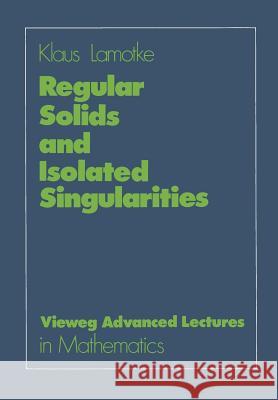Regular Solids and Isolated Singularities » książka
Regular Solids and Isolated Singularities
ISBN-13: 9783528089580 / Angielski / Miękka / 1986 / 224 str.
The last book XIII of Euclid's Elements deals with the regular solids which therefore are sometimes considered as crown of classical geometry. More than two thousand years later around 1850 Schl fli extended the classification of regular solids to four and more dimensions. A few decades later, thanks to the invention of group and invariant theory the old three dimensional regular solid were involved in the development of new mathematical ideas: F. Klein (Lectures on the Icosa hedron and the Resolution of Equations of Degree Five, 1884) emphasized the relation of the regular solids to the finite rotation groups. He introduced complex coordinates and by means of invariant theory associated polynomial equations with these groups. These equations in turn describe isolated singularities of complex surfaces. The structure of the singularities is investigated by methods of commutative algebra, algebraic and complex analytic geometry, differential and algebraic topology. A paper by DuVal from 1934 (see the References), in which resolutions play an important rele, marked an early stage of these investigations. Around 1970 Klein's polynomials were again related to new mathematical ideas: V. I. Arnold established a hierarchy of critical points of functions in several variables according to growing com plexity. In this hierarchy Kleinls polynomials describe the "simple" critical points.











